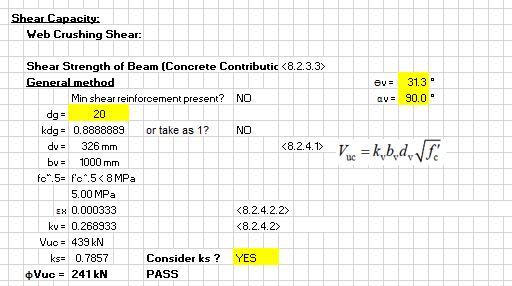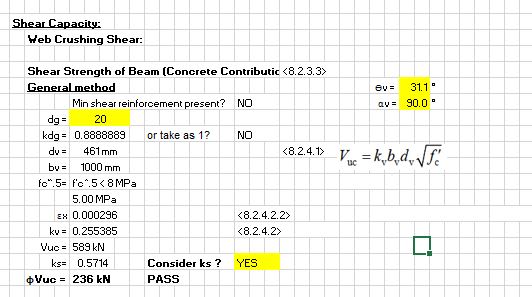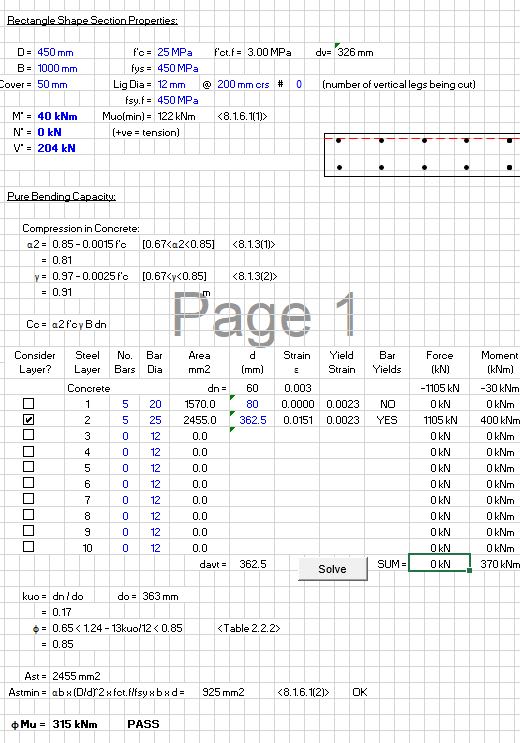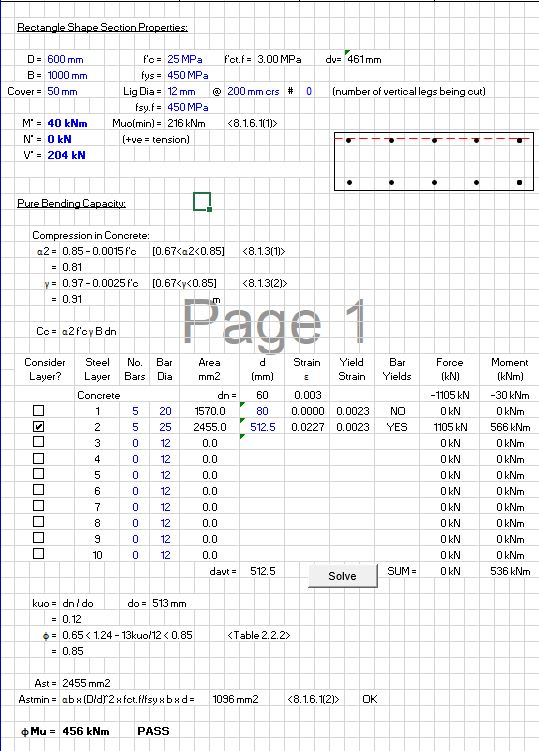Legoman92
Structural
- Nov 9, 2021
- 28
Hey guys,
I've been using the original 2018 version of AS3600 and the changes to the Vuc capacity of beams has been brought to my attention.
It seems embarrassingly reckless to remove the reduction of concrete shear capacity in the 2018 version only to significantly reduce the capacity in a further ammendment using the ks Value.
I did a quick comparison using the new Ks value and found:
450 thick slab, 25 MPa concrete 0.7 * Vuc = 352 kN
600 thick slab, 25 MPa concrete 0.7 * Vuc = 328 kN.
Can someone please explain to me how this new provision makes any sense? How is it possible a thicker slab provides less shear capacity?
I've been using the original 2018 version of AS3600 and the changes to the Vuc capacity of beams has been brought to my attention.
It seems embarrassingly reckless to remove the reduction of concrete shear capacity in the 2018 version only to significantly reduce the capacity in a further ammendment using the ks Value.
I did a quick comparison using the new Ks value and found:
450 thick slab, 25 MPa concrete 0.7 * Vuc = 352 kN
600 thick slab, 25 MPa concrete 0.7 * Vuc = 328 kN.
Can someone please explain to me how this new provision makes any sense? How is it possible a thicker slab provides less shear capacity?




